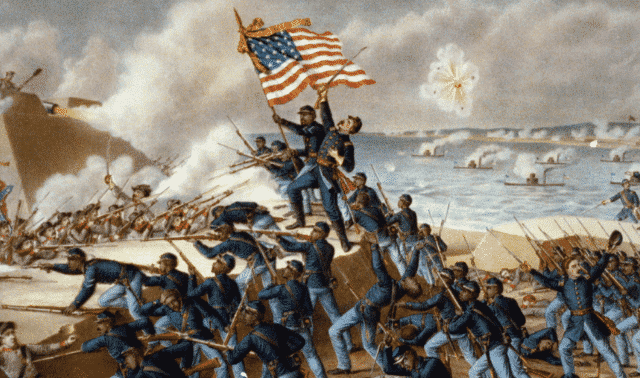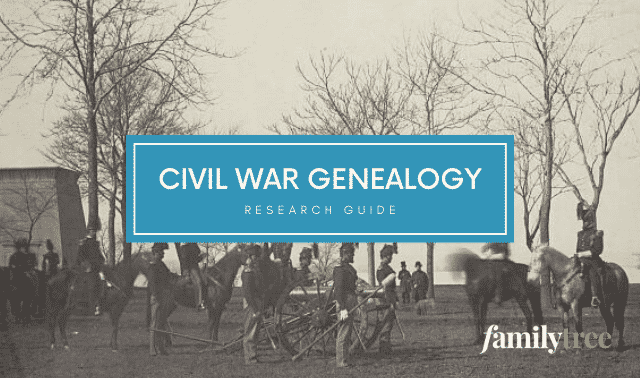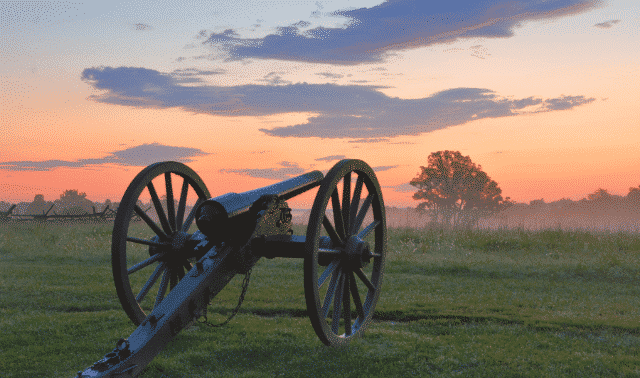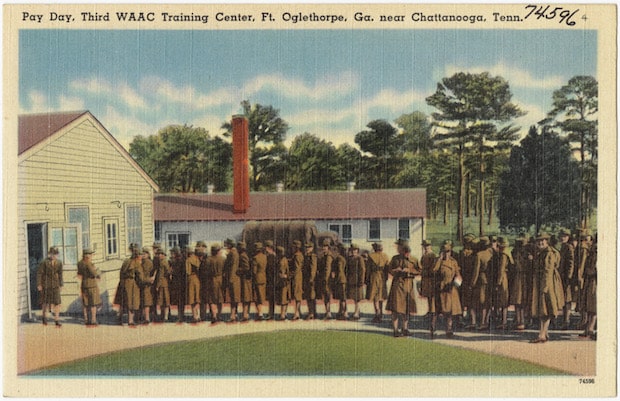Sign up for the Family Tree Newsletter Plus, you’ll receive our 10 Essential Genealogy Research Forms PDF as a special thank you!
Get Your Free Genealogy Forms
"*" indicates required fields

Millions of WWII draft registration cards have come online in recent months. Read these behind-the-scenes stories about draft registrations and what they may teach you about your family history.
In mid-October of 1940, a Delaware newspaper ran this photo of five young men. At first glance, it appears they could be waiting for a parade: three are waving flags. But the caption tells another story. “These young men, anticipating a heavy rush for the draft registration in New York, took their places at midnight and waited until the doors opened in the morning, making sure they were first to register.”

Such was the hype surrounding registration for the nation’s first-ever effort to mobilize its military during peacetime. War was looming, and the US would not be caught as unprepared as it had been for World War I. Eventually, about 50 million men registered. Here’s the story behind the WWII draft registration process, what the records captured (and about whom), and how they might reveal your relatives’ lives.
ADVERTISEMENT
WWII Draft Registration Timeline
The Selective Service Act, signed by President Franklin Delano Roosevelt in September of 1940, required men ages 21 to 36 to register with local draft boards in anticipation of possible conscription. Rather than wait to be called up, many volunteered; this allowed them to choose their branch of service. By the time the Japanese bombed Pearl Harbor, U.S. military forces already numbered nearly 2.2 million. By war’s end, about 16 million served in the U.S. armed forces, over 60% of them as draftees.
Over 16 million men registered in that first round on 16 October 1940. A series of additional registrations followed. Younger men needed to be recorded as they came of age. In 1942, the age of new registrants dropped to 20 and then to 18. Older men registered in 1942, too: first, those up to age 44, and subsequently, older men (45-64) who might be asked to serve in non-military capacities.
| Date | Men required to enroll |
|---|---|
| 16 Oct 1940 | Born 16 Oct 1904 – 16 Oct 1919 (ages 21-36) |
| 1 July 1941 | Born 17 Oct 1919 – 12 July 1920 (turned 21 since the previous registration) |
| 16 Feb 1942 | Born after 17 February 1897 OR born on or before 31 December 1921 (ages 21-21 and 35-44) |
| 27 Apr 1942 "Old Man's Draft" | Born 28 April 1877 – 16 February 1897 (ages 45-64) |
| 30 June 1942 | Born 1 January 1922 – 30 June 1924 (ages 18-20) |
| 10-31 Dec 1942 | Born 1 July – 31 December 1924 (age 18) |
| 16 Nov – 31 Dec 1943 | Living abroad, ages 18-44 |
What’s in WWII draft registration cards?

John Felix, Jr.’s draft registration card shows the kind of information requested therein. On the same line as his name appear two numbers. The federal government assigned a serial number for the purposes of the draft lottery; local draft boards entered an order number. (If there’s a letter in front of the serial number, it tells you which registration it was: S=2nd; T=3rd; U=4th; N=5th; W=6th. No letter means it was either the first or last registration).
ADVERTISEMENT
Draft registrations also call for the registrant’s place of residence (and/or mailing address), age and date of birth, birthplace, telephone number, name and address of a contact person (often a close relative), employer’s name and place of business. A physical description (race, height, weight, complexion, hair and eye color and identifying marks) is recorded on the back. The card is dated and the local draft board identified. John’s card didn’t request his citizenship status, but other versions did.
Where can I find WWII draft registration cards?
With recent updates to collections at Ancestry and Fold3, all surviving World War II draft registration records now are online. Unfortunately, none remain for the state of Maine; these were destroyed without being filmed. The same holds true for the “old man’s” registration for the states of AL, FL, GA, ME, MS, NM, NC, SC and TN.
You’ll find the most extensive WWII draft registration collections on subscription websites Ancestry and its sister site Fold3. The free website FamilySearch is gradually adding these records, too. The collections are divided into two databases at these sites:
- The “old man’s” registration, searchable also at Ancestry, Fold3 and FamilySearch (the latter is only partially indexed, but you can browse the images). See a note in the Ancestry collection description about image issues for cards from DE, MD, PA and WV.
- A compilation of all available remaining registrations, available at Ancestry, Fold3 and FamilySearch (the FamilySearch link is a landing page with links to individual state collections; you can view but not print or download these). See a note in the Ancestry collection description about replacement cards for those that were destroyed.
Keep in mind that if a man resided near a state boundary, he may have registered in a neighboring state, depending on where his assigned draft board was located.
How WWII draft registrations may reveal a person’s life
The draft registration shown above for John Felix belongs to our ancestor. We love the meaningful glimpse this record gives into his pre-war experience. John must have been expecting to register for the draft eventually, but he was probably startled when the 5th registration dropped the age to 18. He’d turned 18 in April and had just graduated from high school when he registered on 30 June. Then an amendment to the Selective Service Act in November of that year called freshly-registered 18- and 19-year olds into service.
John’s physical description in his registration complements what we see of him in black-and-white photos of this time: he was 6’ 1”, 183 pounds, with blue eyes, blonde hair and a light complexion. He was already working at a dairy, which foreshadows his postwar employment in that industry. John’s signature appears with the small, tidy hand he used throughout his life. Though his father was still alive when he registered, he listed his mother as his contact person. This is probably because his father was much older than his mother and in failing health. In fact, his father died while John was serving in the war; we have photos of him home on leave for the funeral.
Most of the information on WWII draft registration cards was filled in by the man himself. The cards can be important primary or secondary resources for confirming a man’s full name, date of birth, residence and occupation.
What about women and World War II draft registration?
Only men were eligible for the draft in World War II. That doesn’t mean that women didn’t serve: it just means that every woman who did was a volunteer rather than a draftee. Women also performed essential services on the homefront, working in factories and in other capacities.

A woman’s name appeared at least once in the draft lottery list. In 1942, a reporter noticed the name of Violet Virginia Starrett in an Oklahoma City list. According to the newspaper that reported this, Starrett had helped with the previous registration. A fellow volunteer playfully filled out a card for Starrett, which she’d signed as a joke, but apparently it was processed along with the others.
What happened next? Tracing your WWII relatives
Draft registration itself did not constitute military enlistment. After each registration and as needed, men were called up by lotteries. The first lottery was held within days of the first registration.
Did your relatives actually serve in the war? Start by asking other family members, especially older ones. You might get lucky: maybe someone in your family has held onto a relative’s original enlistment or separation paperwork, an old military yearbook or letters sent home by a soldier or sailor.
You can also look for relatives’ names in U.S. Army Enlistment Records and other WWII records. Request copies of Official Military Personnel Files for relatives who served. Explore WWII burial and other records that may provide insight.
As the war progressed, many local newspapers published lists (or at least the serial numbers) of those called up for service in lotteries. Try searching or browsing through the local newspapers in your family’s town. You may find something like this short profile of enlistees John Felix and his half-brother, Eugene Talbott. (In addition to his military status, it reveals that John was a switchman before he enlisted, as well as working at the dairy.) Newspapers also ran casualty lists, warnings for draft dodgers and coverage of conscientious objectors, a new status during World War II.

We found most of the news clippings in this article on the free Chronicling America website.
ADVERTISEMENT




